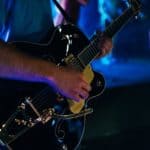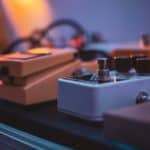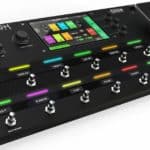A looper pedal can be a great addition to your rig for multiple reasons.
For some players, it’s the key to trying out new ideas while staying in a flow, without having to stop and record them.
For others, it’s a great practice tool that allows you to set up chord progressions to improvise over.
But whatever the use you give to them, when your amp doesn’t have an effects loop, things can get a bit noisy.
How are you supposed to use a looper pedal without an FX loop, then?
For amps that don’t have an FX loop, the only alternative for using a looper is putting it directly in front of them. This will come with limitations if you rely on the preamp stage for distortion since it, among with the EQ parameters will also affect the repeated sound clips you looped.
In this article, I will dive deep into all you need to know about looper pedals and how you can make the most out of them even if your amp doesn’t have an effects loop.
After reading this page you will know for sure if a looper will work with your current gig and playstyle.
Are you ready to get started?
Let’s go!
How do looper pedals work?
Looper pedals, at their core, are pretty simple tools that record snippets of your playing, on command, and let you replay them in an endless repetition cycle.
This is their most basic functionality, however, naturally, with technological advances, most advanced units also let you work with overdubs, and sequencing and even some have their own built-in effects.
The ability to play with yourself is a great device to power up your practice, jam over ideas, or even dial a particular tone letting you focus on the gear rather than playing the instrument.
Where should you put your looper pedal if your amp doesn’t have an FX loop?
If your amp doesn’t have an effects loop, there are not many alternatives available for using a looper pedal.
The best way around it is to set up your looper at the end of your signal chain, just before hitting your amp.
This will allow you to create loops with all the different tones you can achieve with your other pedals, with the ability to record a clip, change your sound, and use that other sound on a new clip.
Although completely usable, this approach is limited because by being in front of your amp, all of the output from the looper will be modified by the unit’s preamp stage.
Remember that the preamp stage of an amp is in charge of creating distortion and shaping the tone with EQ controls.
How would your looper pedal sound if you put it in front of the amp?
Any looper will sound just fine no matter where you place it. Whether it is through the effects loop or in front of the amp.
For this, you shouldn’t worry.
There will be no negative effects on its sound just because of where you place it.
Many amps don’t have effects loops and that shouldn’t be a limitation for playing with a looper, at least for their most basic use cases.
Are there any limitations to putting your looper in front of the amp?
By putting your looper in front of the amp you will be limiting the final output it will produce, particularly if you play with amp distortion.
This is because the output of the looper, this is to say the repeated sound clips you recorded and are playing, can’t be distinguished from your live guitar tone by the amp.
So, if you record a loop with a clean tone, and then intend to increase the gain and solo over it, the amp will also distort the clean loop as well as what you are currently playing.
This could be a big limitation for some players, however, to many others that use their amps mostly as pedal platforms, it could not even be an issue.
When you only use the amp as a means to amplify your pedal rig signal, putting the looper at the end of your rig, before hitting the amp will work almost as if you were going through the effects loops.
Of course, the EQ knobs of the amp will still modify its output, but this is something completely livable for most players.
You will be able to turn on and off any pedals, including overdrives and distortions before it, record a part, then change your tone and record or play over it with total normality, and as it’s usually intended.
Can you damage your amp if you use the looper in front of it?
It’s virtually impossible to damage your amp by using a looper in front of it. After all, the signals you are sending into it are just repetitions of guitar sounds that had already gone through when you recorded them.
Loop carelessly, and know nothing wrong could happen.
Now, for loopers that also incorporate drum machines to keep rhythm, there could be some caveats, but you can read more about it in the following article:

Hello there, my name is Ramiro and I’ve been playing guitar for almost 20 years. I’m obsessed with everything gear-related and I thought it might be worth sharing it. From guitars, pedals, amps, and synths to studio gear and production tips, I hope you find what I post here useful, and I’ll try my best to keep it entertaining also.





